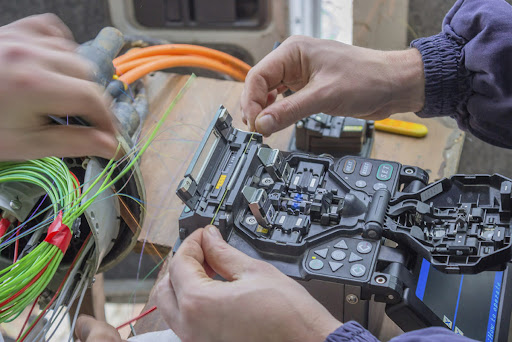Ribbon- The Next Step For Optical Fibre
The way we interact and collaborate online has transformed and with that, so has user demands. High-definition video, instant cloud backup, clear audio, and syncing-factor kept the world moving forward through the pandemic crisis. These elements are now assumed to be the bedrock of the communications expectations from our consumers.
However, legacy network infrastructure is struggling to keep up with the demand, especially the ones from smaller service providers and facility co-ops that function away from metropolitan centers. Lost data, lost connection, buffering, and freezing is the misery of users in underserved markets, which is why various providers are collaborating with communication service providers for optical solutions and IP transport networking solutions that leverage extra capacity from current fiber brownfield networks without ripping out everything and starting from scratch. The latter can be highly expensive for businesses.
An excellent example can be taken from Eastern Slope Rural Telephone in Eastern Colorado. Due to the previous network coming to an end and having restricted capacity, the company needed to upgrade to an end-to-end system that would efficiently accommodate existing and future growth without disturbing service to their current customers.
The Ribbon communication for optical transport and IP solutions, cater to all requirements. Along with extending a highly scalable solution that can easily accommodate the growth of future bandwidth, the solution also allows various advantages that include allowing the team to continue to back legacy TDM solutions and offer additional support for business services and mobile backhaul services.
Versatile Results From Ribbon
What is the right way to get more data and speed from the current network infrastructure?
Bob Cubbage, the Partner Support Engineer At Ribbon Communications, illustrated that the company offers a wide variety of technologies that they can integrate through optical transport network solutions like Dense Wavelength Division Multiplexing. DWDM improves bandwidth over current fiber networks by merging and transmitting various signals simultaneously at various wavelengths on a single fiber.
It is similar to turning the radio on in the car; you are provided with various stations that you can filter down to what you wish to listen to, despite the fact that all stations are being broadcasted simultaneously on the air. The broadband fiber allows businesses to send various color lasers simultaneously carrying various data solutions.
They have receivers that filter the numerous wavelengths that they are acquiring as the spectrum contains different frequencies. It implies that you may be backing up the database in red and downloading a security patch in orange. At the time, kids played Fortnite in the green wavelengths and continued to enjoy uninterrupted video conferencing calls at 8K in the blue aspect of the spectrum.
A Future That Is Craving For Data
A common misconception among people is that 5G rollouts are constantly gaining momentum, and it will reduce the demand for fiber investment. However, the situation is exactly the opposite; the 5G rollout will not reduce the requirements of infrastructure investment. This is because the towers will need high-bandwidth connectivity to back the network and the boosted expectation from high-speed data, low latency, and faster download.
Cubbage highlighted that the transport network would remain the foundation for connecting wireless solutions to the tower. Additionally, the latest and imminent 5G mobile services are merely going to increase the demand on the network.
A lot of older legacy transport systems are approaching capacity limits. It is the right time to upgrade the network networks to support the more new and demanding high bandwidth services. These solutions are putting strain on the existing system. Additionally, the next-generation broadband networks support a myriad of applications with unique characteristics and requirements. The solutions provided by Ribbons are customized to generate high-performance, high-capacity networks, irrespective of the size.
Ribbon’s IP optical solutions allow operators to offer on-the-demand high-speed solutions at a pace that makes sense for the firm while making way for profitable revenue streams like 5G backhaul.
There are various government relief programs that service providers are using for network modernization projects. The company works together with a select group of Value Added Resellers to provide the necessary hardware and services required for an end-to-end network upgrade. It enables customers to have procurement, reducing the administrative complication of acquiring government funding.
